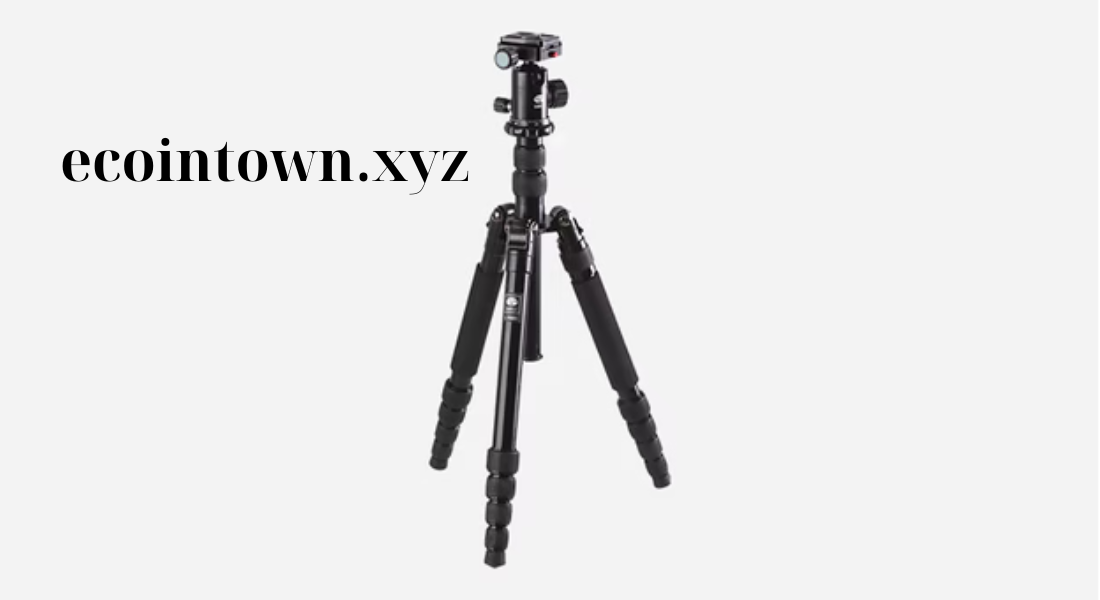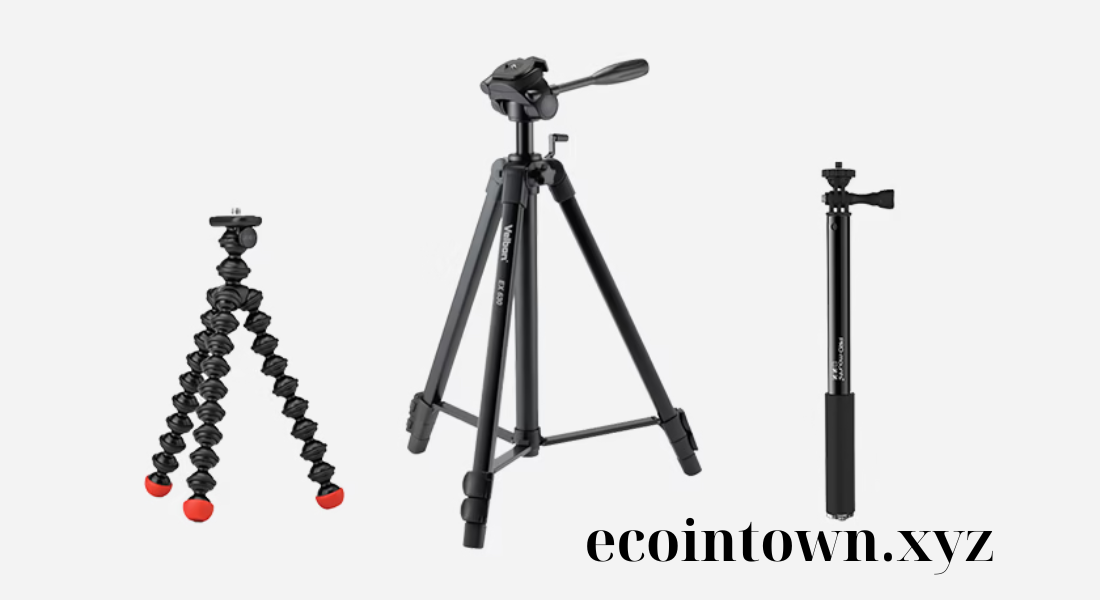Introduction
For photographers and videographers, a tripod is more than just an accessory—it’s an essential tool that can greatly improve the quality of shots by providing stability and support. Whether you’re capturing breathtaking landscapes, shooting intimate portraits, or creating dynamic videos, choosing the right tripod type for your specific needs can make all the difference. With so many tripod types available, it can be challenging to know where to start.
Tripods come in various styles and materials, each designed to serve different purposes and cater to unique shooting environments. For instance, lightweight travel tripods are ideal for on-the-go photographers, while sturdy studio tripods provide the stability needed for professional shoots.
Additionally, specialized tripods, such as flexible gorilla tripods or video tripods, offer unique features that enhance creativity and functionality. This guide explores the various tripod types, their unique features, and helps you find the ideal tripod for your photography or videography projects. By understanding the benefits of each type, you can make an informed decision that enhances your shooting experience, improves the quality of your work, and supports your artistic vision.
1. Tabletop Tripods
Tabletop tripods are compact and lightweight, making them ideal for travel photographers or vloggers who need a portable option for on-the-go shooting. Despite their small size, tabletop tripods are surprisingly stable and provide support for compact cameras, smartphones, or even small DSLRs.
Best for: Travel, vlogging, and shooting in confined spaces
Key features: Small, lightweight, and often foldable
Drawbacks: Limited height, not suitable for heavy equipment
2. Travel Tripods
Designed for portability, travel tripods are lightweight and can easily fit in carry-on luggage or backpacks. They often have foldable or telescoping legs, making them compact when not in use. Travel tripods provide excellent stability for photographers on the move, without adding too much bulk to their gear.
Best for: Travel, landscape photography, and outdoor shooting
Key features: Lightweight, compact design, foldable legs
Drawbacks: Limited height range, may lack the sturdiness of larger tripods
3. Monopods
A monopod is essentially a tripod with only one leg. While it doesn’t provide the same stability as a traditional tripod, it offers much better mobility. Monopods are ideal for situations where you need to move quickly, such as in sports or wildlife photography. They’re also easy to carry, as they tend to be more lightweight than traditional tripods.
Best for: Sports, wildlife, and action photography
Key features: Portable, quick setup, ideal for fast movement
Drawbacks: Limited stability, especially for long exposures
4. Studio Tripods
Studio tripods are larger, heavier, and built for maximum stability, making them perfect for professional photography setups. These tripods are often used for studio shoots where portability isn’t a priority. With heavy-duty construction, they can support large cameras and lighting equipment, ensuring no movement or shaking during a shot.
Best for: Studio, portrait, and product photography
Key features: High stability, robust design, supports heavy equipment
Drawbacks: Bulky, not suitable for travel
5. Flexible Tripods
Flexible tripods, like the popular GorillaPod, have bendable legs that allow them to wrap around various objects, such as tree branches or poles. This unique feature makes them an excellent choice for unconventional angles and creative compositions. Flexible tripods are small and easy to carry, making them great for travel or outdoor photography.
Best for: Travel, outdoor, and creative photography
Key features: Bendable legs, versatile mounting options
Drawbacks: Limited support for heavy cameras, lower stability

6. Heavy-Duty Tripods
Heavy-duty tripods are specifically designed to support large, professional cameras and equipment, including long telephoto lenses. These tripods are made from high-quality materials like carbon fiber or aluminum and are built to withstand harsh weather conditions. Heavy-duty tripods are perfect for nature and wildlife photographers who need to work with heavy gear and require a steady base.
Best for: Wildlife, sports, and landscape photography
Key features: High load capacity, robust design, weather-resistant
Drawbacks: Heavier and bulkier than other tripod types
7. Pocket Tripods
Pocket tripods are incredibly small and can fit into your pocket, hence the name. They’re ideal for those who need a basic, portable support option for smartphones or small cameras. While they lack the stability of larger tripods, pocket tripods are convenient for quick shots and can be used for self-portraits, group photos, or time-lapses.
Best for: Casual photography, smartphone users, and travel
Key features: Extremely compact, lightweight, easy to carry
Drawbacks: Limited stability, not suitable for professional setups
8. Gimbal Tripods
Gimbal tripods come with a built-in gimbal head that allows the camera to move smoothly while keeping it stable. This makes gimbal tripods perfect for videographers and photographers who want to capture fluid, dynamic shots, such as in nature or sports photography. The gimbal head enables easy tracking of moving subjects, making it a must-have for wildlife and action photographers.
Best for: Wildlife, sports, and videography
Key features: Smooth motion, ideal for tracking moving subjects
Drawbacks: Often heavy and expensive, not as portable
9. Mini Tripods
Mini tripods are larger than pocket tripods but still compact enough for travel. They’re versatile and can hold compact cameras, smartphones, and even some DSLRs. Mini tripods are great for tabletop photography and low-angle shots, providing a stable base without taking up much space.
Best for: Tabletop photography, low-angle shots, and travel
Key features: Small size, lightweight, easy to set up
Drawbacks: Limited height, not ideal for heavy equipment
10. Video Tripods
Video tripods are specifically designed for videography and often come with fluid heads for smooth panning and tilting. Unlike photography tripods, video tripods are bulkier and have more robust legs to support heavy video equipment. They provide stability for recording, making them perfect for filmmakers and videographers.
Best for: Videography, filmmaking, and events
Key features: Fluid head for smooth motion, sturdy construction
Drawbacks: Heavier and less portable, not ideal for quick setup
Choosing the Right Tripod Type for Your Needs
When selecting a tripod, consider your specific needs and shooting environment. Here are a few key factors to keep in mind:
- Portability: If you travel often or shoot on location, choose a lightweight tripod like a travel or mini tripod.
- Stability: For studio or heavy-duty shooting, a studio or heavy-duty tripod will provide the stability you need.
- Weight Capacity: Ensure the tripod can support your camera and any accessories, especially for professional setups.
- Height Range: Consider the maximum and minimum height of the tripod and how it fits your shooting needs.
- Budget: Tripods come in various price ranges; determine your budget and find the best option within it.
Conclusion
Each tripod type offers unique benefits and features that cater to different photography styles and requirements. By understanding these differences, you can make an informed choice that enhances your photography experience. Whether you need a lightweight tripod for travel, a heavy-duty option for the studio, or a flexible tripod for creative shots, there’s a tripod designed for every purpose.
Investing in the right tripod type can elevate your photography and videography, offering stability, precision, and creativity in every shot. So, explore your options, consider your needs, and find the perfect tripod to support your photographic journey.
